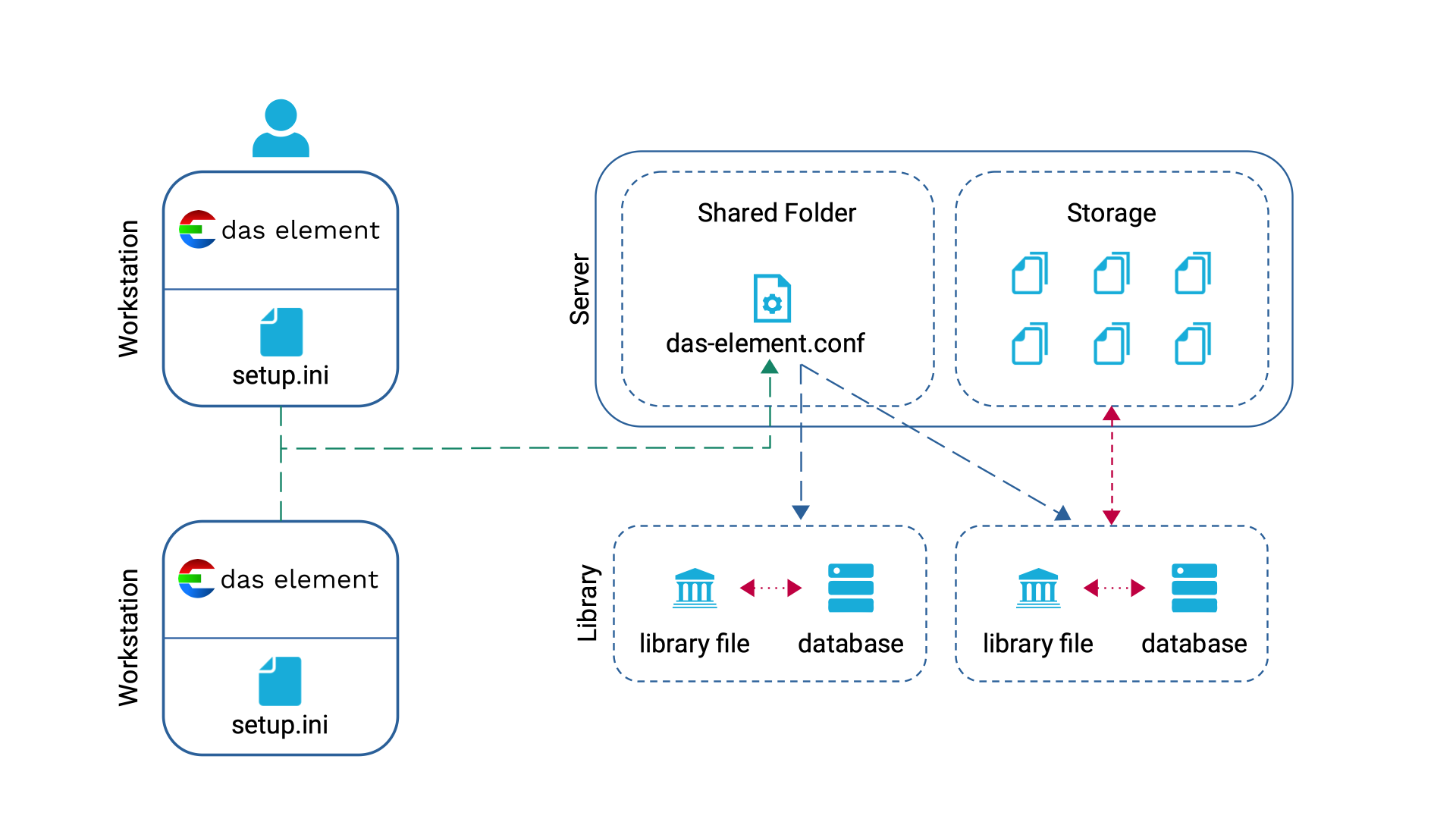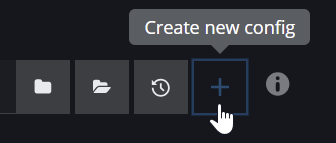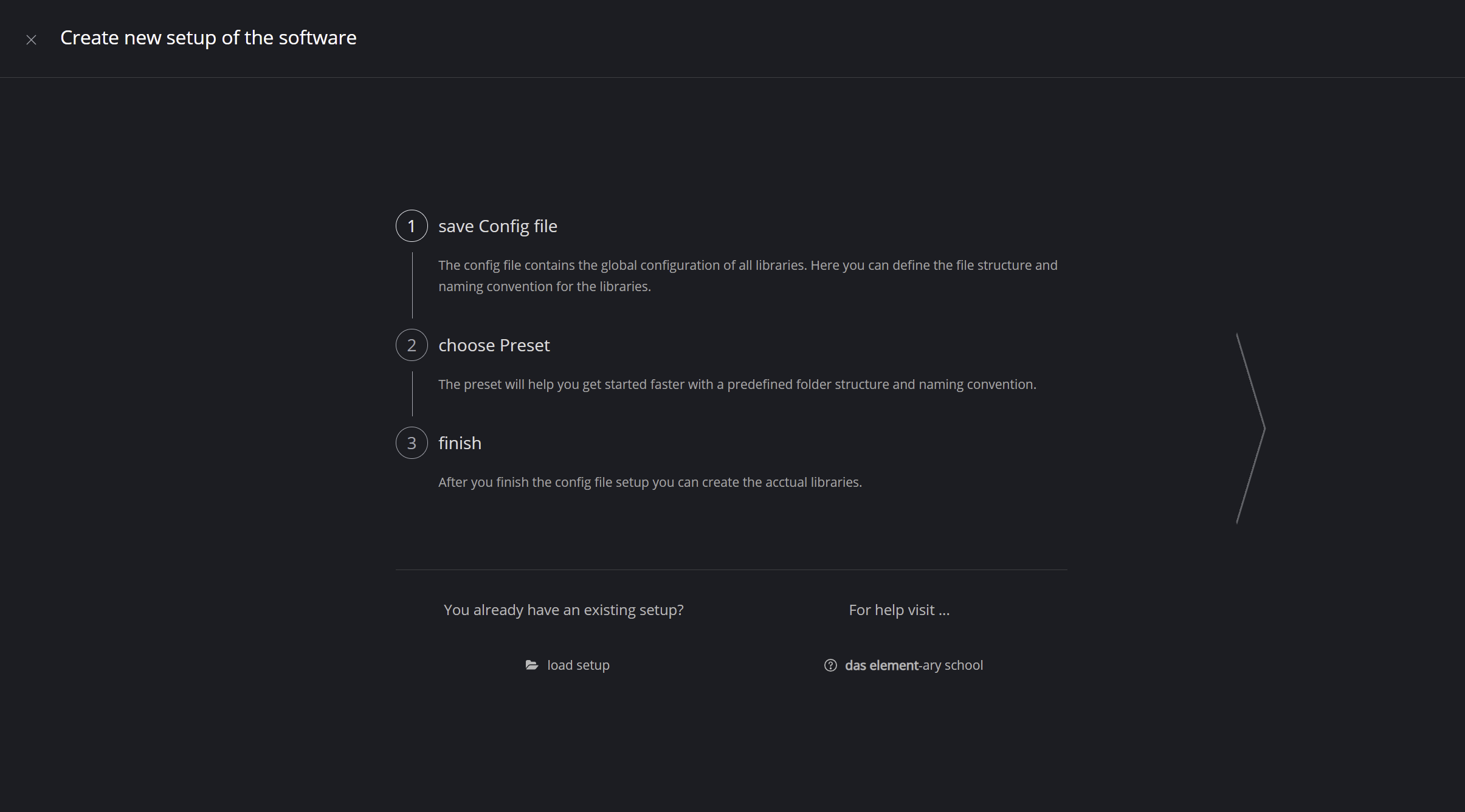Setup
Check out this video tutorial to get started.

What is happening under the hood of das element?
Config - the global configuration for naming convention, file structure, etc., and controls which libraries load
Library - hold a collection of elements. It consists of the library file and its database.
Here are some common file path locations that you might need:
type of file | description | path |
|---|---|---|
setup file |
Ignore this file if you use environment variables. A local setup file references the config, license server/file and machine learning models. | Environment variable: |
config file | Default or custom config file location |
or some custom location |
variables file | File storing environment variables loaded at software startup |
|
collections | Current user's collection files |
|
models | Folder of machine learning models |
|
log files | For error log files |
|
recent files | History of previously used setups |
|
preview files | The software creates previews of your elements to increase performance. | Linux: |
~ (tilde) is your users home directory.
Linux/macOS: /home/myuser
Windows: C:\Users\myuser / %userprofile%
Config file
The config file contains the global configuration of all libraries associated with this configuration.
Here you can define the file structure and naming convention that are shared across all of the linked libraries.
When creating your new setup for the software you can specify the file location.
The file can be stored anywhere. The setup file referenced to this config file.
By default it is stored in your local user home directory
Linux/Mac~/.das-element/das-element.conf
Windows%userprofile%/.das-element/das-element.conf
Create different setup files to control different setups scenarios.
For example: for remote working artist that only should have access to the proxy files or individual projects that require a very specific setup.
Create new config
The dialog to create a new configuration (welcome screen) will automatically appear the first time you start the application, or if a configuration file specified in the setup.ini file or by the environment variable DASELEMENT_CONFIG_PATH cannot be found. To create a new configuration, navigate to:
Settings → Global → Path to config → plus-icon button (Create new config)


Welcome screen to create a new configuration
Library file
A library contains a collection of elements.
The library files are saved by default in a hidden folder .config in library root location.
Each library exists of two parts:
Library file
contains the configuration of the library, like value overwrites and transcoding templates.{library_name}.lib- file content is JSON formatDatabase
holds all information about the elements of this library
For file based database (SQLite):{library_name}.db
For Studios it is recommended to use a server-based database like PostgreSQL, MySQL or MariaDB.
It is recommended to create a regular backup for the database! Especially if you are using SQLite.
Define the file structure in the global settings and overwrite values or path patterns that are relevant for this library. This way, the naming convention stays consistent through all libraries, but you can control individual parts by overwriting values depending on this specific library.
Example:
Overwrite parts of the naming convention depending on the facility or company division
(VFX, commercial, ….). Now you can easily separate or join the libraries of different parts of your company.
Setup file
If you use the environment variable to specify your config file, you can ignore this file.
This file suits single users and small teams without a pipeline or IT support. It is a local file on the artist's workstation that indicates which config file the software should use.
The setup file points to a config file and stores information such as license server/file and which machine learning models to use.
The file is stored in your local user home directory
Linux/Mac~/.das-element/setup.ini
Windows%userprofile%/.das-element/setup.ini
As an alternative you can set the environment variable to specify the config file location.
Order of validation:
Environment Variable (
DASELEMENT_CONFIG_PATH)setup file (
setup.ini)
